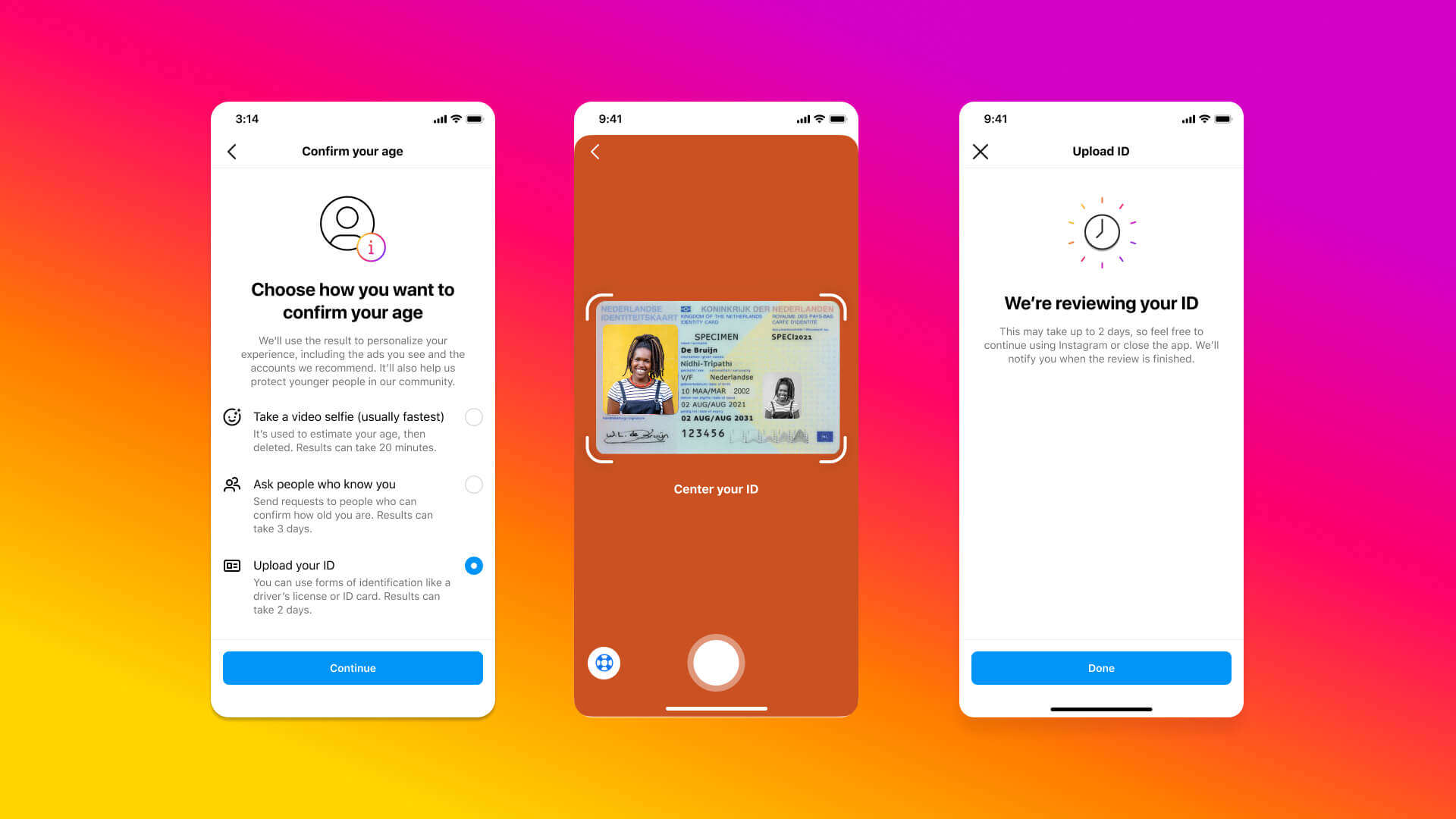
Social media platform Instagram is testing new approaches to identify its users’ age, including an AI-powered age recognition system from UK digital identity provider Yoti. Instagram says these tools will allow it to “provide age-appropriate experiences” for different groups of users.
The measure comes as regulators are tightening rules on how social media companies can interact with children, and may lead to online services that are more responsive to their users’ age.

Instagram has required users to state their age when signing up since 2019, but has so far not required any verification. Now, if a user wants to update their age to say they are 18 or older, they’ll be required to prove it using the new tools.
The two Instagram verification techniques are known as “video selfie”, which uses the Yoti tool to estimate age based on facial features, and “social vouching”, which involves having three mutual followers over the age of 18.
Instagram says users will still be able to opt to upload their ID, such as a driver’s licence or passport directly to them to confirm age with the ID stored for 30 days if the Yoti method doesn’t work.
In a blog post Instagram said: “In addition to testing the new menu of options to verify people’s ages, we also use AI to understand if someone is a teen or an adult. AI helps us prevent teens from accessing Facebook Dating, adults from messaging teens and helps teens from receiving restricted ad content, for example. Our goal is to expand the use of this technology more widely across our technologies.”
How does Yoti work?
Julie Dawson, Yoti’s chief policy and regulatory officer, told Tech Monitor the company’s technology analyses individual elements of a face to estimate the age. “Our technique detects that it is a living human face, converts the pixels in the image to numbers which it can then look over for patterns that are linked to different age groups,” she explained.
When used for age verification, the system only shares an estimated age with the company requesting the check, as well as a margin of error. The image of the face is deleted immediately.
Yoti’s technology is being used for age verification by supermarkets at self-checkouts, on pornography websites, and even by the police to triage potentially child abuse images, Dawson explained.
“We have a light version running on-device to detect whether a child, or someone under the age of 18, is about to send a naked image of themselves,” she said. “This can then be stopped to reduce the volume of user generated abuse images on the internet.”
How accurate is Yoti age verification?
In May 2022, Yoti published a white paper documenting the accuracy of its age estimates. In it, the company reported an average error range of 1.36 years either side for children aged 6 to 12, and of 1.52 years for 13 to 19 year olds. “This is much better than human checks from people like bouncers or police officers,” explained Dawson.
The estimates are less accurate for people with darker skin tones, the white paper revealed. This may be because people of colour have so far been under represented in the images used to train Yoti's age recognition algorithm, Dawson said.
The company is seeking to redress that, she added, by gathering anonymous images and age data from around the world to ensure that a variety of skin tones is considered.
Stricter rules on children's safety
Instagram's decision to implement age checks comes as regulators around the world are tightening rules for how social media platforms interact with children. Last year, the UK's Age Appropriate Design code came into force, requiring information services providers - including social media platforms - to ensure content is age-appropriate for users, therefore obliging them to verify their age.
To date, however, Western social media platforms have been reluctant to verify the ages of their users, says Charles Radclyffe, CEO of EthicsGrade, which rates companies on their digital responsibility. “It is mystifying that tech companies aren’t doing more.”
The practice is more developed in China, he adds, where the government determines what features children can access and how long they can use social media apps for. Children under 14, for example, can only use Douyin - China's version of TikTok - for 40 minutes a day.
Age verification is not as much of an ethical concern as other forms of biometric classification, says Imogen Parker, associate director of policy at the Ada Lovelace Institute. “At least with age verification you can assess whether it works across the population," she explains. "You are trying to measure something that has an underlying objective answer - if they are under or over 18."
Applications which use physical characteristics, such as tone of voice, gait, or facial expressions, to make a subjective assessment - identifying their emotions, for example, or their eligibility for a job - are much more susceptible to bias, Parker says.






